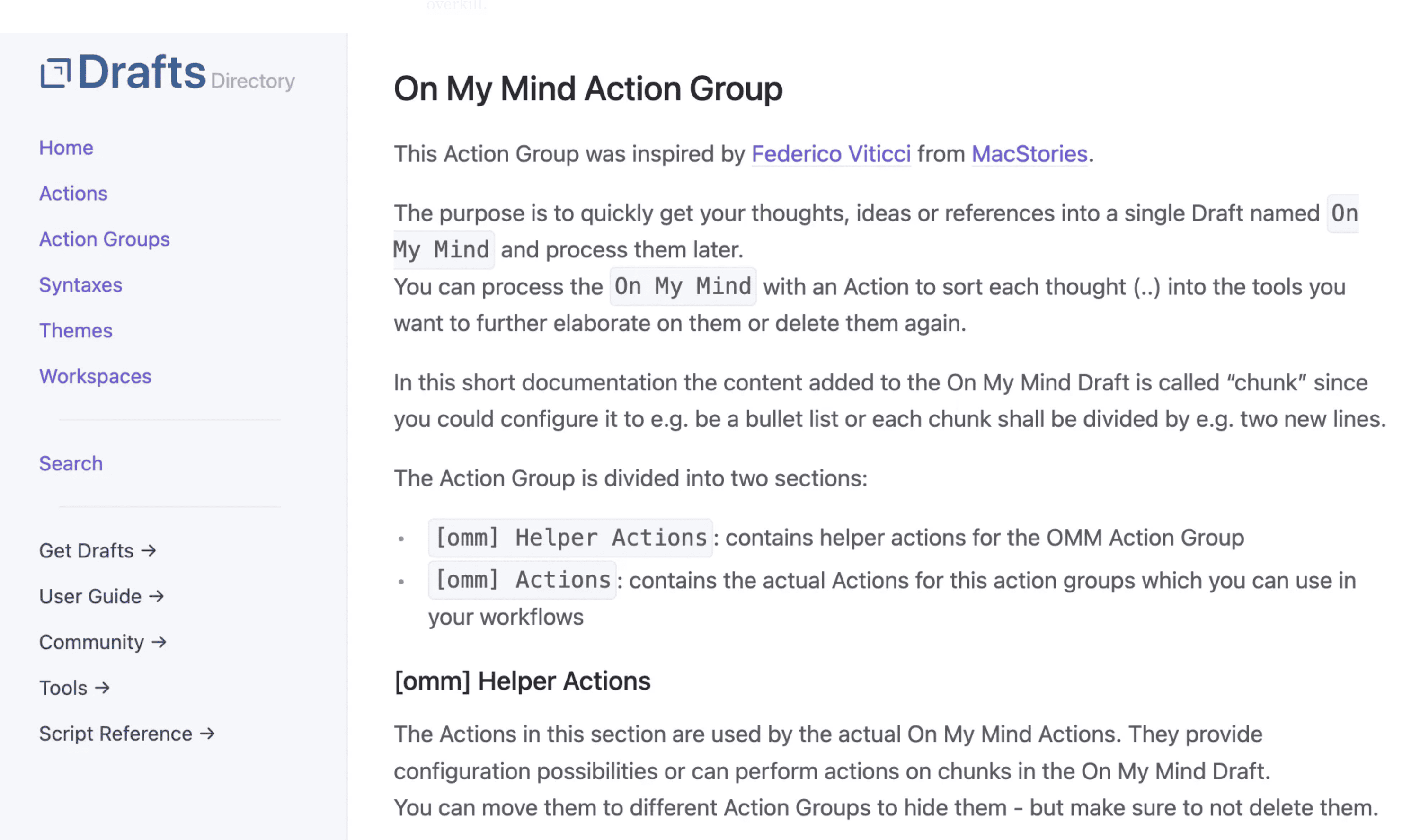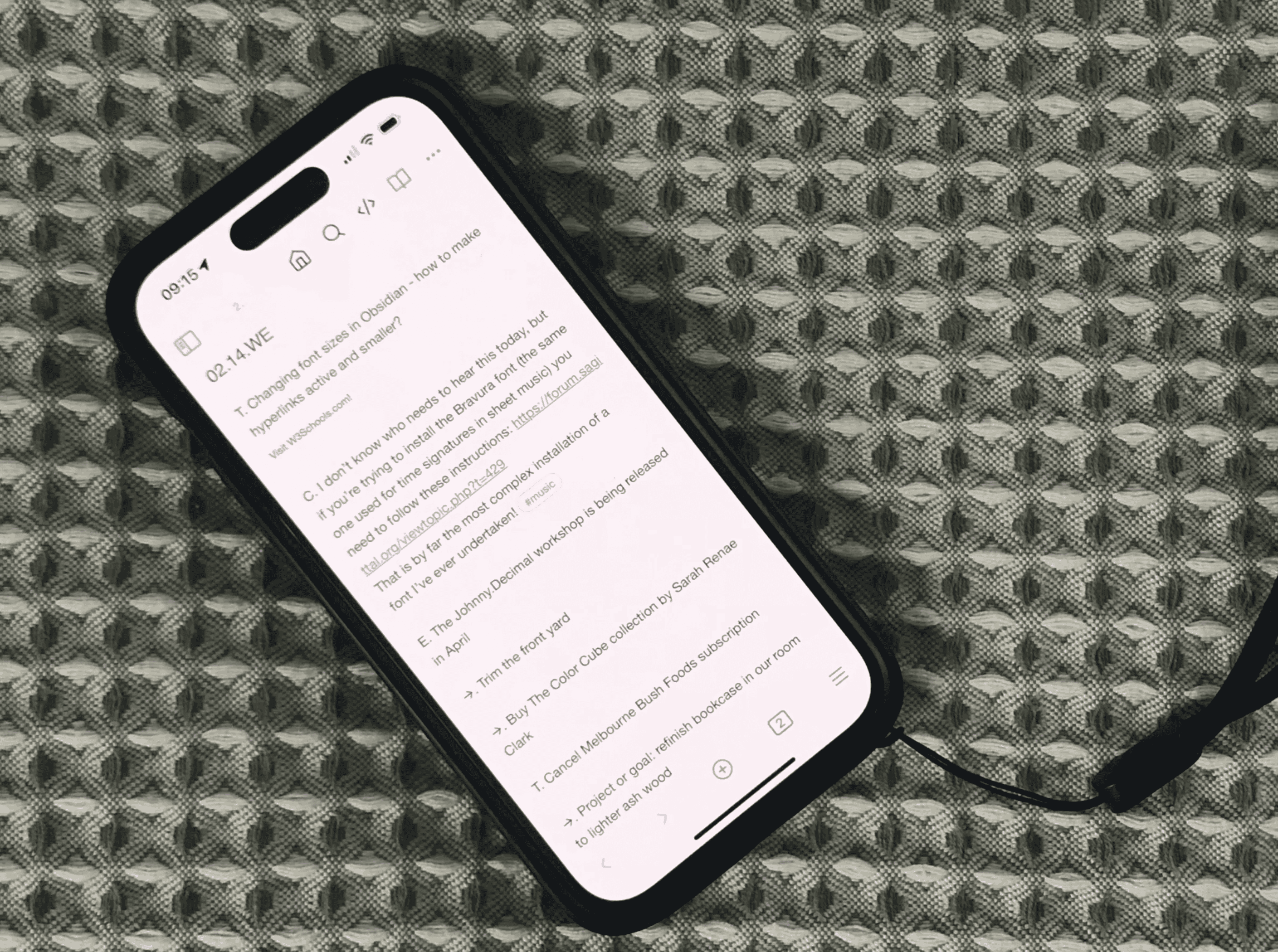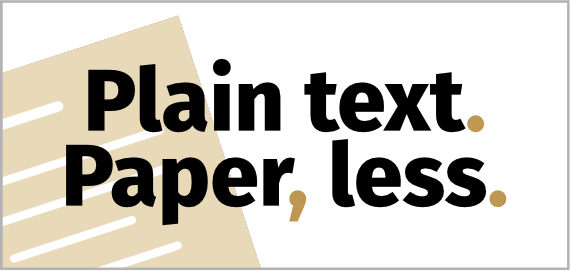Week 2 of the One Big Text File Experiment (OBTF) has me examining the pain points of resurfacing notes at specific times, security, and having more than one source of truth. I also link to a way to make Drafts what sounds like the plain text inbox of your dreams, though I question whether or not it’s overkill.

E. C. Chang left a comment on PTPL 088 about the On My Mind action for Drafts (made by FlohGro), which you might like to check out if you’re interested in using that app as a one-stop plain text inbox. Read the comment as it appears on Medium, or go straight to the Drafts action page.
The whole effect is that you have that elusive one-stop plain text inbox that can then send your content to wherever seems best to you. Before I stumbled onto this, using Drafts as an inbox was kind of clunky and felt like a necessary evil. Using On My Mind makes it easy to collect and then disseminate inbox items. — E.C. Chang
I intend to try it out at some point, but find myself holding back because right now I’m in my simplifying, do-it-by-hand phase. Let me know in the comments what you think, and if you give it a go.

Week 1 lives here. You can also follow #OBTF on the Fediverse/Mastodon.
Even the lowest-friction note making method on the planet is going to have its pain points, and during the past week I’ve discovered three. None are earth shattering, but as a self-appointed, unofficial PKM scientist, I shall note them here for posterity.
It’s easy to resurface particular notes at specific times when each entry is its own file; not so much when all entries live in one file.
I missed that in-built advantage today when making a note of the favourite foods of two of my grandchildren, information I’ll want to see part way through next month when they’ll be spending the weekend at our place. There are several things I could do:
Block references are another option, but I gave those up a couple of years ago and I’m not going back! They’re an Obsidian-only feature, and would make the information accessible in only one app. I’m committed to keeping my notes app-agnostic.
I’m aware that Logseq is made for this kind of thing, but same story — I want portable notes and a system of using them that doesn’t rely on the features of any one app.
The most elegant solution in this instance is number three, along with a brief note in my calendar to shop for those foods the day before the children are due to arrive.
Lesson: The simplest solution is oftentimes the best.
When a large amount of your personal information lives in a single file, you’re going to want to keep it out of nefarious hands. Not that we’d intentionally keep passwords in there, but if a scraping of this kind of file could reveal our favourite dog/school/teacher/city, that would not be a good thing!
Add to that my habit of regularly pressing ⌘A → ⌘C while working as an interim clipboard backup, and there’s the potential for accidentally sharing waaay too much information. At least in my head, there is.
I’m not seriously worried about someone hacking my Dropbox / iCloud / home computer / iPhone to seize this file, but Paranoia is my third middle name so I’m always going to be a better-safe-than-sorry kind of person.
How does this fine example of overthinking affect the OBTF Experiment? I have no idea.
Well, I suppose it has reinforced that the practice of regularly pressing ⌘A → ⌘C is best kept for writing done directly online, like social media post replies and the like. Read more about this practice here.
Ideally I’d rather have one collection point for everything. One inbox, one place to go when entering and retrieving information.
Having two collection points, aka sources of truth, is the necessary state of things when using a hybrid digital–analog system — at least in the way I like to do it — and I’m coming to terms with it quite well.
Rather than viewing paper as an extension of my digital system, or digital as something I use when I’m not able to write in my notebook, I’m viewing each as different flavours of an overarching process. The process of observing my own life and learning from it so that I can, as Ryder Carroll puts it, design a better future.
 Sign up to receive the latest content in your inbox
Sign up to receive the latest content in your inbox
 PTPL 091 · I’m Using One Big Text File in Obsidian as a Digital Bullet Journal
PTPL 091 · I’m Using One Big Text File in Obsidian as a Digital Bullet Journal
 PTPL 093 · Projects With a Code Name Work Better Than Those Without
PTPL 093 · Projects With a Code Name Work Better Than Those Without